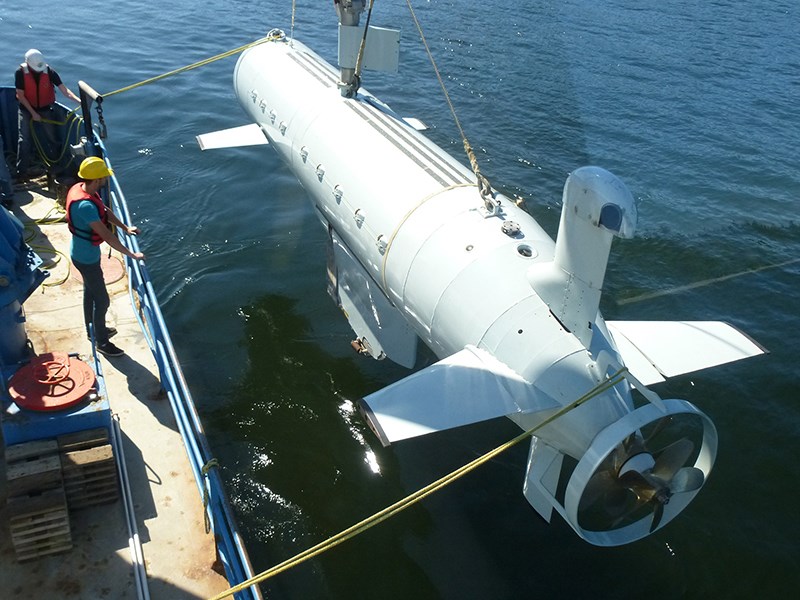Research conducted in Indian Arm last week may one day prevent oil spills and other contaminants from fouling beaches and harming wildlife.
Visitors to Belcarra Regional Park may have witnessed a cigar-shaped vessel being lowered into the waters of Indian Arm from a large research vessel.
Called the Dorado, the semi-submersible autonomous underwater vehicle — built by International Submarine Engineering Ltd. (ISE) of Port Coquitlam — was doing trial runs to test new water quality monitoring equipment.
On board the ISE Researcher boat, a Dalhousie PhD candidate kept close watch over the data coming in from the underwater vehicle while ISE engineers kept an eye on the remote control vehicle to make sure it stayed on track.
Student Chris L'Esperance said with the completion of eight days of trials in B.C., the Dorado will be shipped to Halifax harbour in Nova Scotia so the university can conduct a mock oil spill and do more research.
The equipment on board the Dorado will be used to detect the movements of a tracer substance, likely a fluorinated sulphur compound, to see how it is affected by current, wind and tide.
"We want to understand how it [the tracer] spreads out over time," said L'Esperance, explaining that knowing how a contaminant moves in the water can be used to develop a response plan.
For kayakers and recreational boaters plying the waters near the vessel on a sunny Friday, the vessel with only its masts visible must have looked like a mini-sub from the 1954 movie 20,000 Leagues Under the Sea. During its outing off Belcarra beach, the Dorado travelled a lawnmower pattern for over an hour while ISE workers monitored marine traffic and a video crew used a drone to record the Dorado's mission.
"I'm pretty proud," said Jim McFarlane, the 82-year-old founder of ISE, who said Dorado's second life as a research vehicle — it was formerly a Canadian Navy mine sweeper — is important for building knowledge.
"We have to have objective evidence," said McFarlane, a former naval commander and engineer who continues to oversee the company he founded in 1974.
This is not the first time ISE submersibles have been used in important research. ISE subs have been used to map the ocean floor in the Canadian arctic and were part of an expedition to locate a lost ship from the Franklin expedition.
THE DETAILS
The Dorado is a semi-submersible autonomous underwater vehicle built by International Submarine Engineering Ltd. of Port Coquitlam and owned by Defence Research and Development Canada.
Last week, it was on loan to Dalhousie University's Department of Oceanography for research conducted by Chris L'Esperance, a PhD student, supported by a team from the Canada Excellence Research Chair in Ocean Science and Technology Laboratory. The goal was to rapidly survey large areas of surface ocean using sensitive water monitoring equipment aboard the Dorado, with the research funded by the Marine Environmental Observation Prediction and Response (MEOPAR) Network. The principal investigators are Douglas Wallace and Mae Saeto.
With the completion of a successful trial in Indian Arm last week, the Dorado will be shipped to Halifax Harbour in Nova Scotia for more testing.



